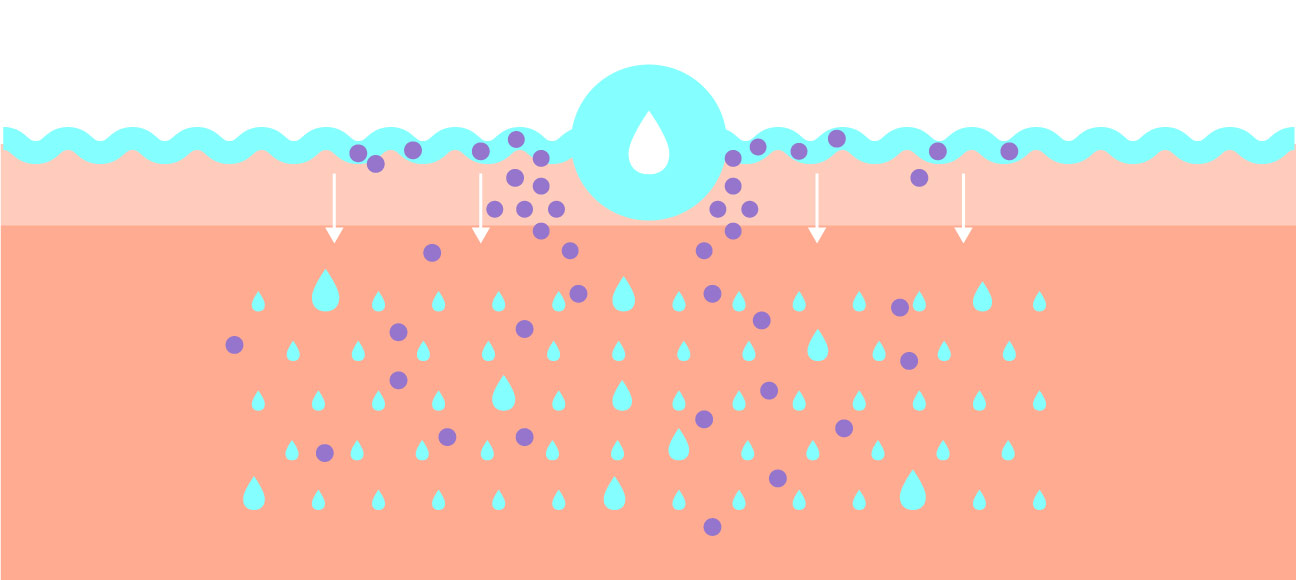Why Science Says hyaluronic Acid Is the Holy Grail to Wrinkle-Free, Youthful Hydration
Hyaluronic acid (HA) is a naturally occurring glycosaminoglycan found throughout the body's connective tissue. Glycosaminoglycans are simply long unbranched carbohydrates, or sugars, called polysaccharides.
HA is the main component of what gives your skin structure, and is responsible for that plump and hydrated look. You may have heard the chatter around collagen, but hyaluronic acid is where it’s at.
With the buzz around anti-aging, it’s about time we talk about hyaluronic acid, its benefits for our skin, and why molecular weight of an ingredient is important! It plays a pivotal role in the wound healing process, and decreases as we age making us more susceptible to sagging and wrinkles.
Read on to learn the science behind hyaluronic acid, so you can see that HA isn’t just a fad ingredient, but a staple for your skin care routine.
What are the benefits of hyaluronic acid?
HA benefits
- anti-aging
- moisturizing
- wound healing
- anti-wrinkle
- increases skin elasticity
- can treat eczema
- can treat facial redness
Why’s hyaluronic acid so magical? For starters, HA can bind up to 1000 times its weight in water! In other words, it functions as a humectant and holds water molecules onto the surface of your skin to keep it nice and hydrated.
Anytime we’re talking about skin that’s well-moisturized, we're mainly referring to skin that has a lot of water content. Perhaps you've heard the term transepidermal water loss, or TEWL for short? This is the scientific term for the measurement of how much water is evaporated from the skin.
When a product prevents TEWL, that means it’s keeping your skin hydrated by making sure that water doesn't escape from your skin’s surface. Hyaluronic acid does exactly that by slowing the rate at which the water evaporates.
Apart from being a very effective hydrator, a couple of studies have also found that it’s very good for healing wounds, too!
Are there side effects to using hyaluronic acid?
If you're formulating your own products, or purchasing HA products that list the percentage, we recommend keeping the HA concentration below 2 percent. Why?
A very low molecular weight of 5 kDA HA has the ability to penetrate the skin, which means it can potentially carry other unwanted ingredients, chemicals, and bacteria more deeply into the skin. If you have compromised skin, this might be bad news. Thankfully, on its own, HA tends to not cause allergic reactions since our bodies also make it.
Fortunately, cosmetic chemists have this science down, so we can defer to their expertise and what people say about certain HA products. But if you’re formulating your own HA serums, know that not all hyaluronic acid is equal.
This holy grail of hydration may have unintended side effects. There are some varieties of HA that are a bit controversial, and increased levels are actually linked to inflammatory skin diseases like psoriasis.
One study found that an application of HA actually slowed down wound healing, compared to just pure glycerin. Yikes! This may have been because of the concentration and molecular weight of the hyaluronic acid.
What’s the science behind hyaluronic acid?
The benefits of hyaluronic acid on the skin has to do with its molecular weight and concentration. In this case, size matters! The molecular weight refers to its mass, or how big the HA molecule is. This is measured in something called unified atomic mass units — daltons, or kDa for short.
HA between 50 to 1,000 kDa is the most beneficial for skin, with about 130 kDa being the best, according to the most recent human studies. Anything higher won't make too much of a difference. Anything lower might cause inflammation.
How did we get this number? When you look at studies, you'll see a pattern, but one of the most thorough studies looked at HA with different molecular weights, including 50, 130, 300, 800, and 2,000 kDa.
After one month, they found that treatment with 130 kDa HA was the most effective, increasing skin elasticity by 20 percent. Both the 50 and 130 kDa groups had significant improvement in wrinkle-depth and skin roughness after 60 days. All the other molecular weights still improved elasticity and skin hydration, just less so. You can read more about this molecular weight analysis from the original breakdown here.
Diameter of hyaluronic acid
The diameter of hyaluronic acid is also important as it too determines the ingredient’s ability to penetrate the skin. A recent study investigated the efficacy of a topical, low molecular nano-hyaluroid acid, and found that smaller substances under 500 kDa:
- changed the depth of wrinkles
- increased moisture
- increased elasticity around the eye
- absorbed into the skin better
Larger molecules, with a molecular weight greater than 500 kDa, had a more difficult time passing through the skin barrier.
What products should you use?
There are skin care products out there that take away all the guesswork for you by combining various HA molecules for maximum effectiveness. It's like a jam-packed party of hyaluronic acid-y goodness.
Call / Whatsapp the office on +233 26 234 7219 for further assistance and how to make your purchase.












Leave a Comment